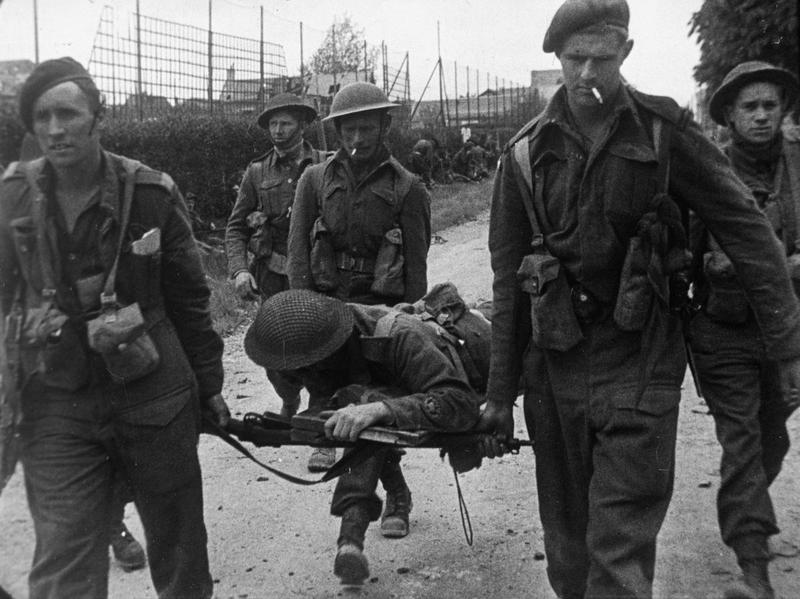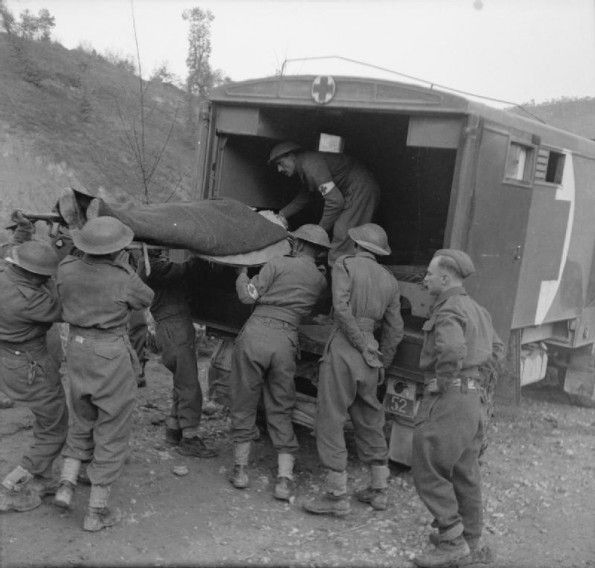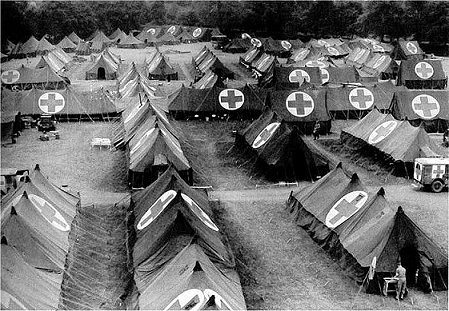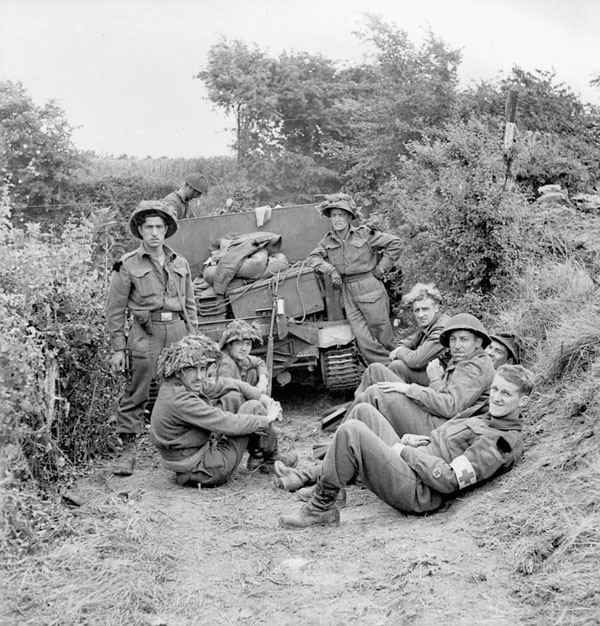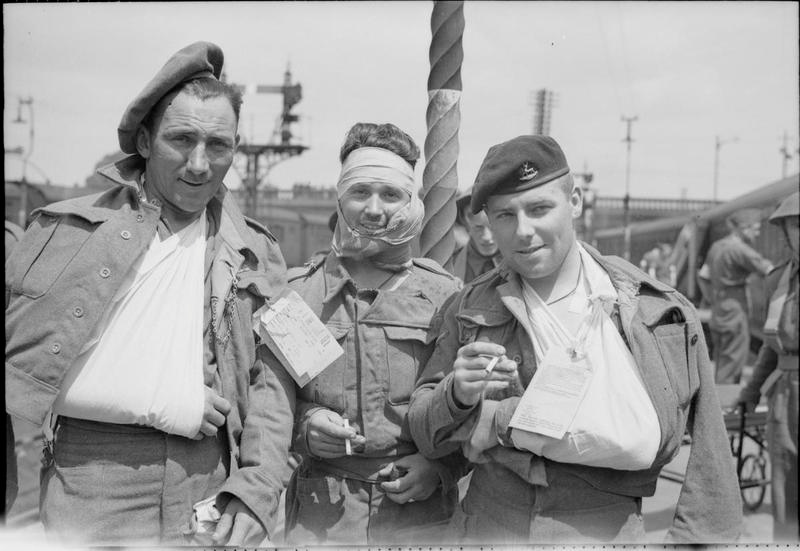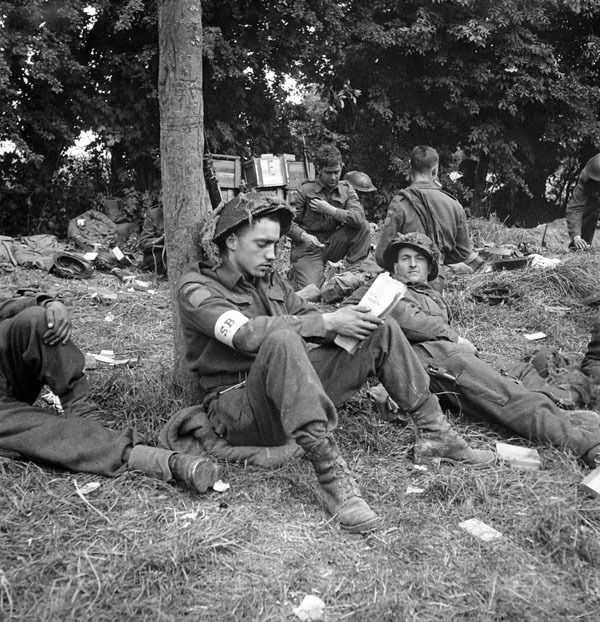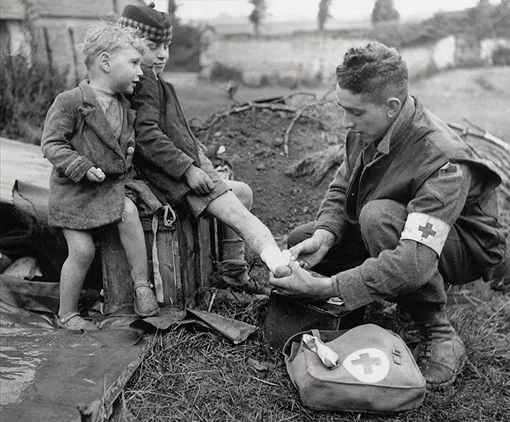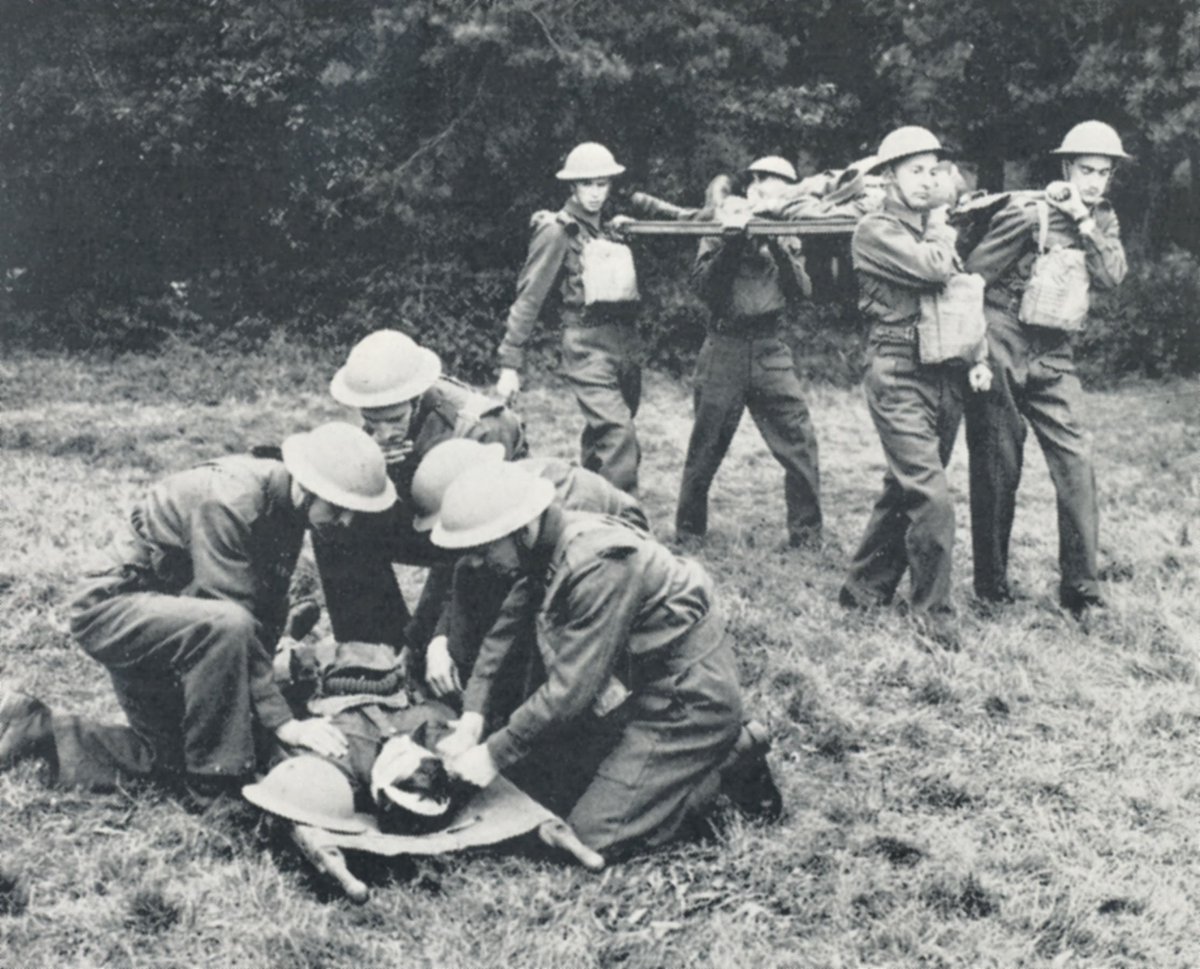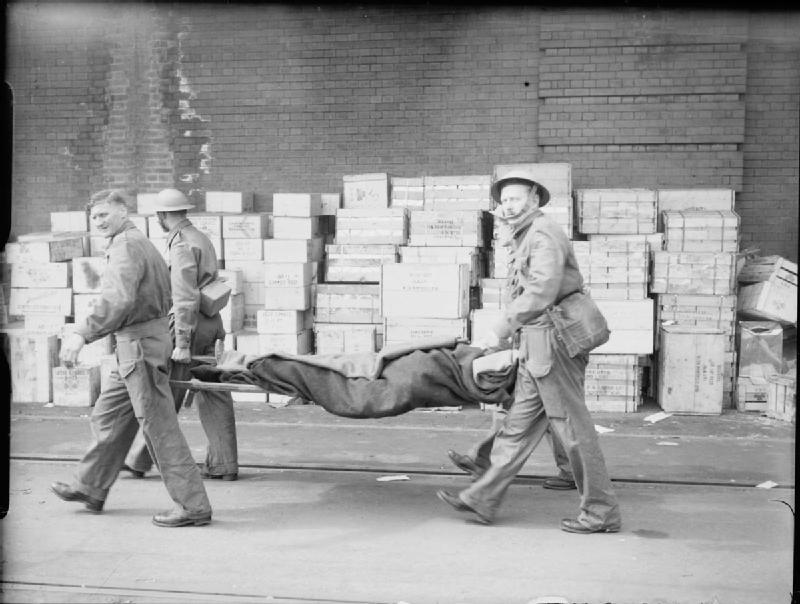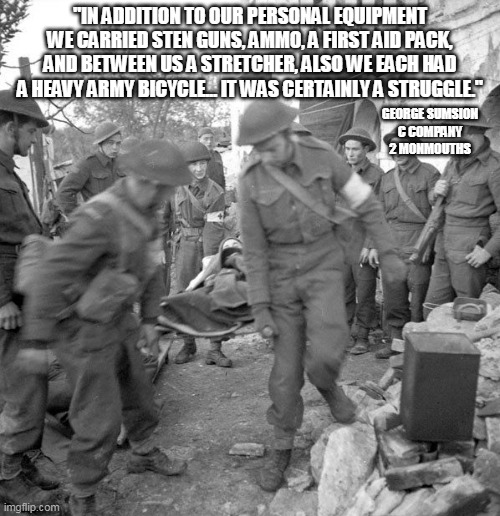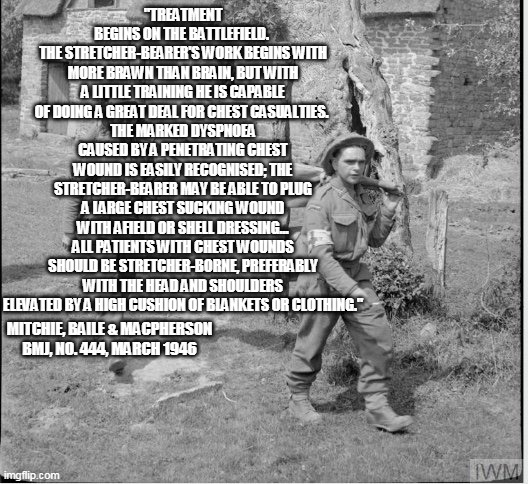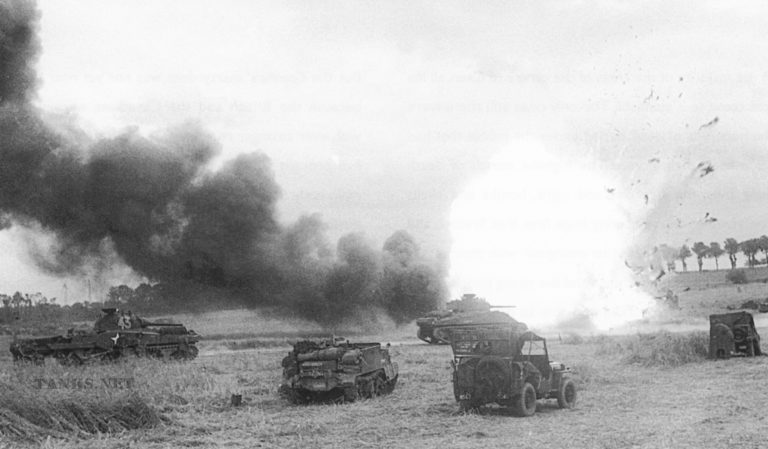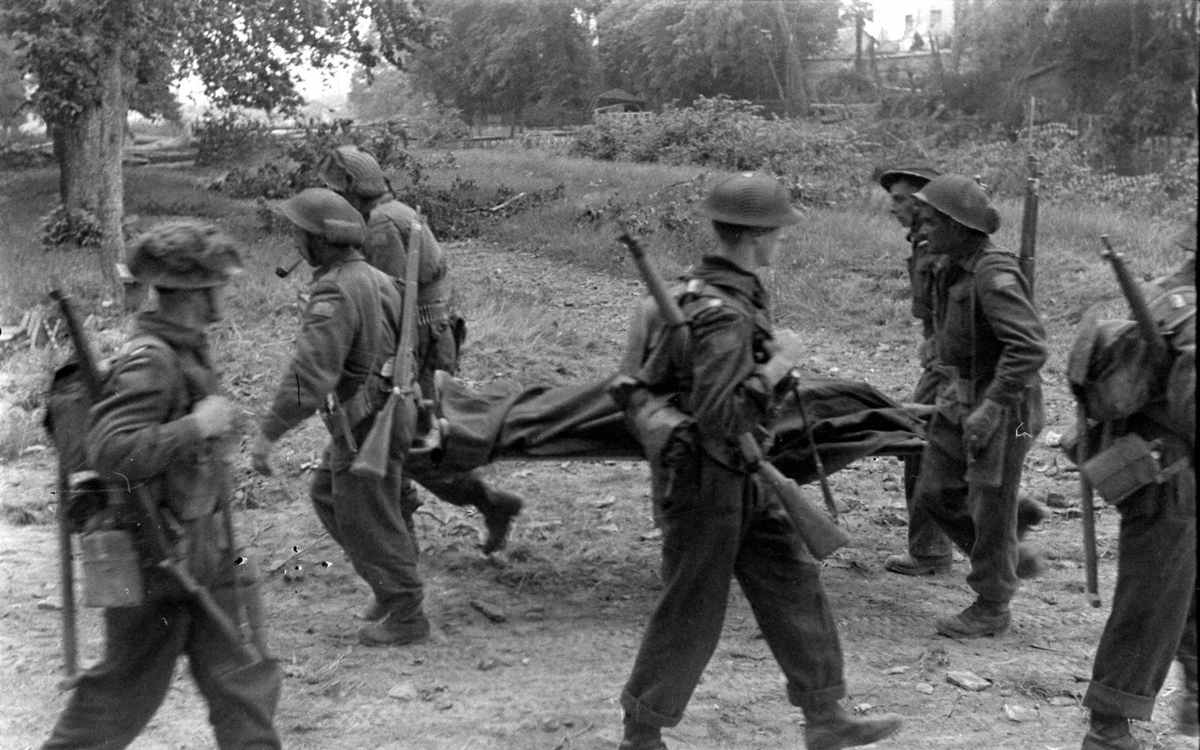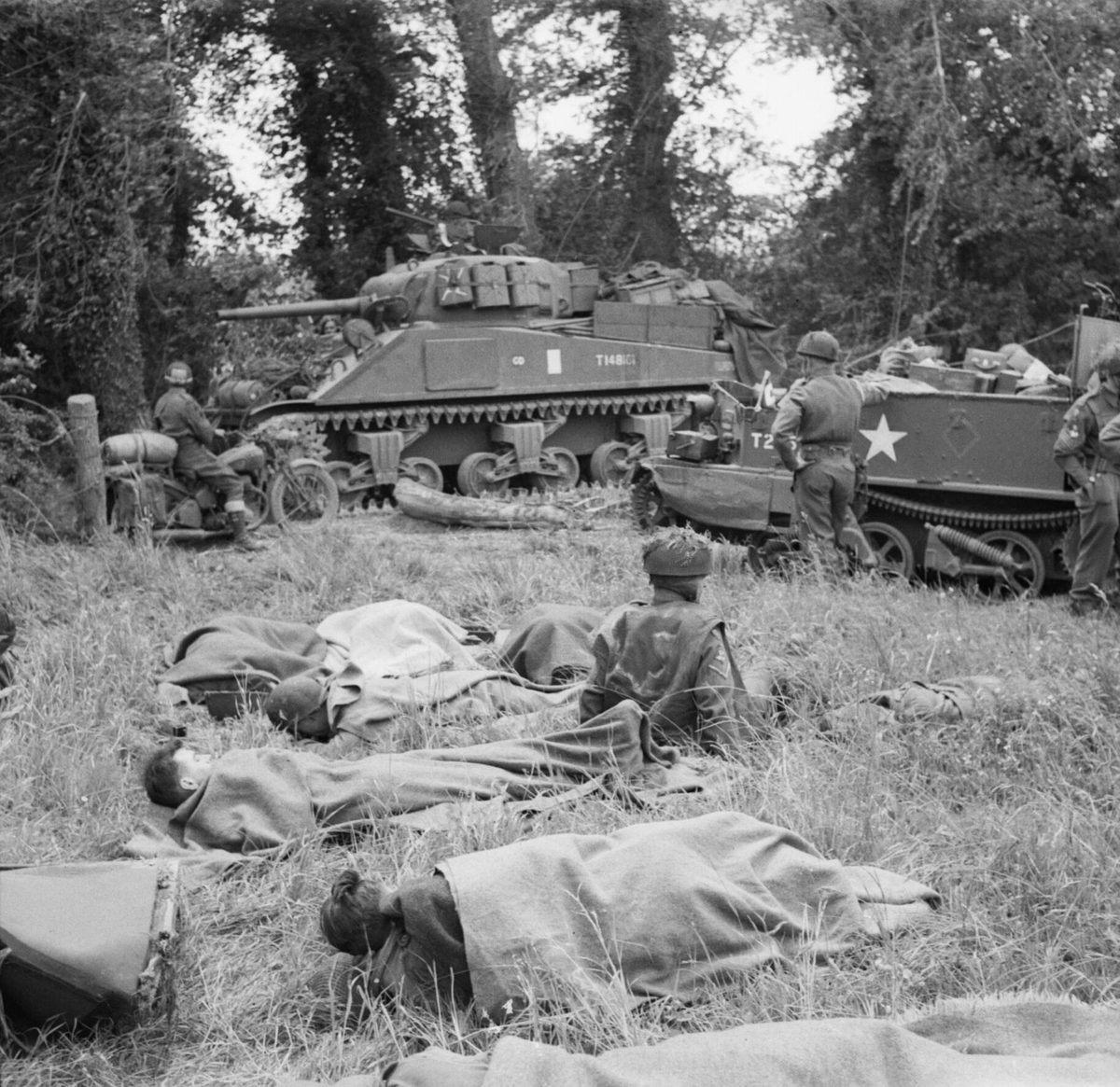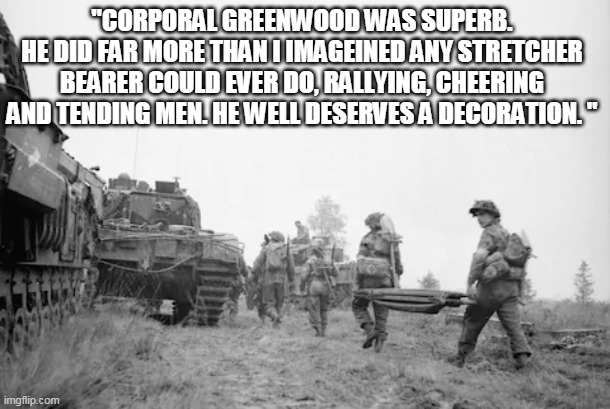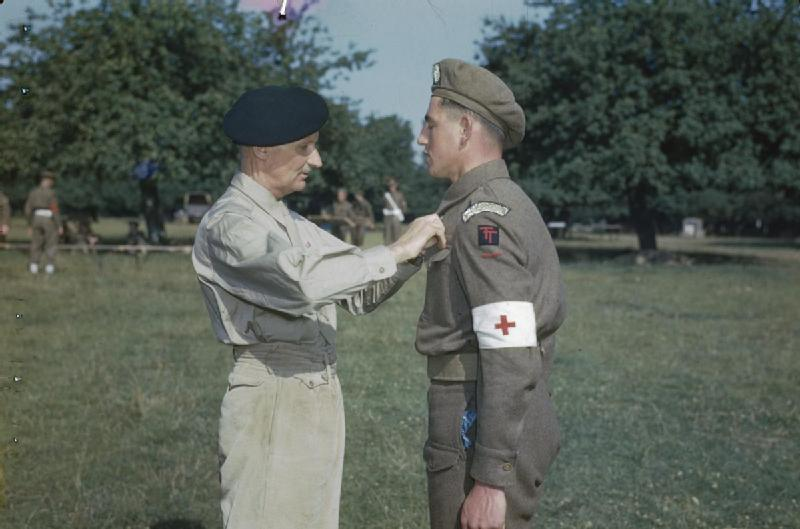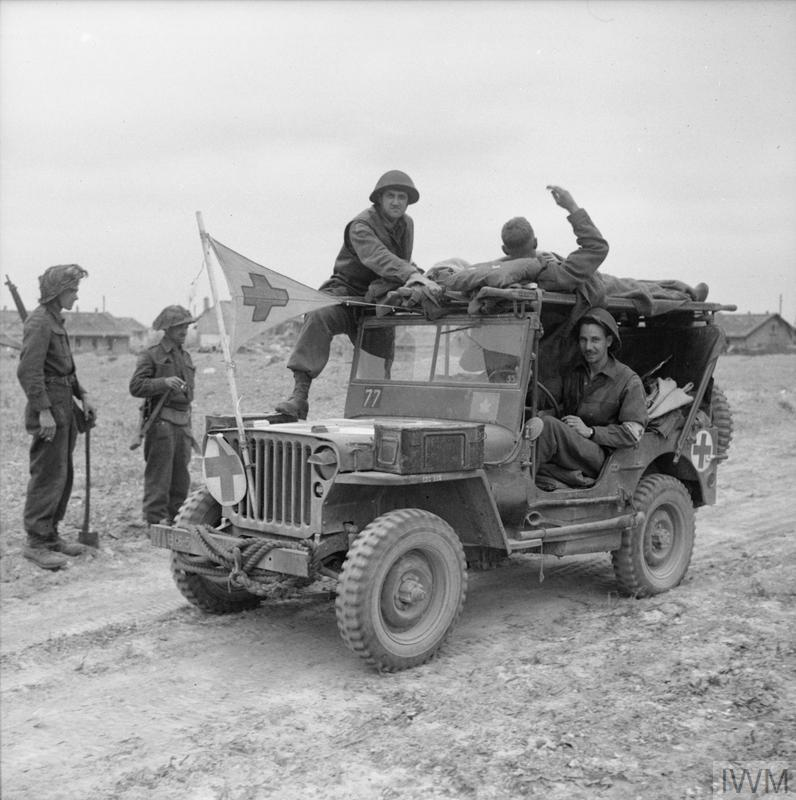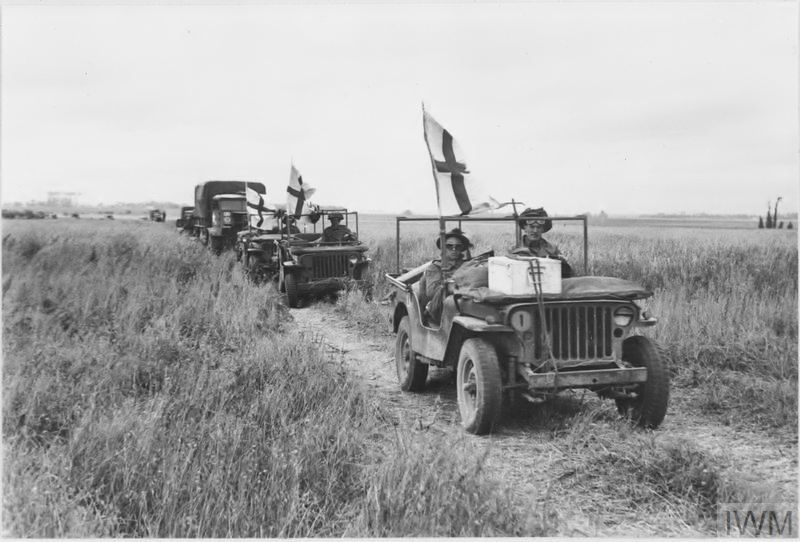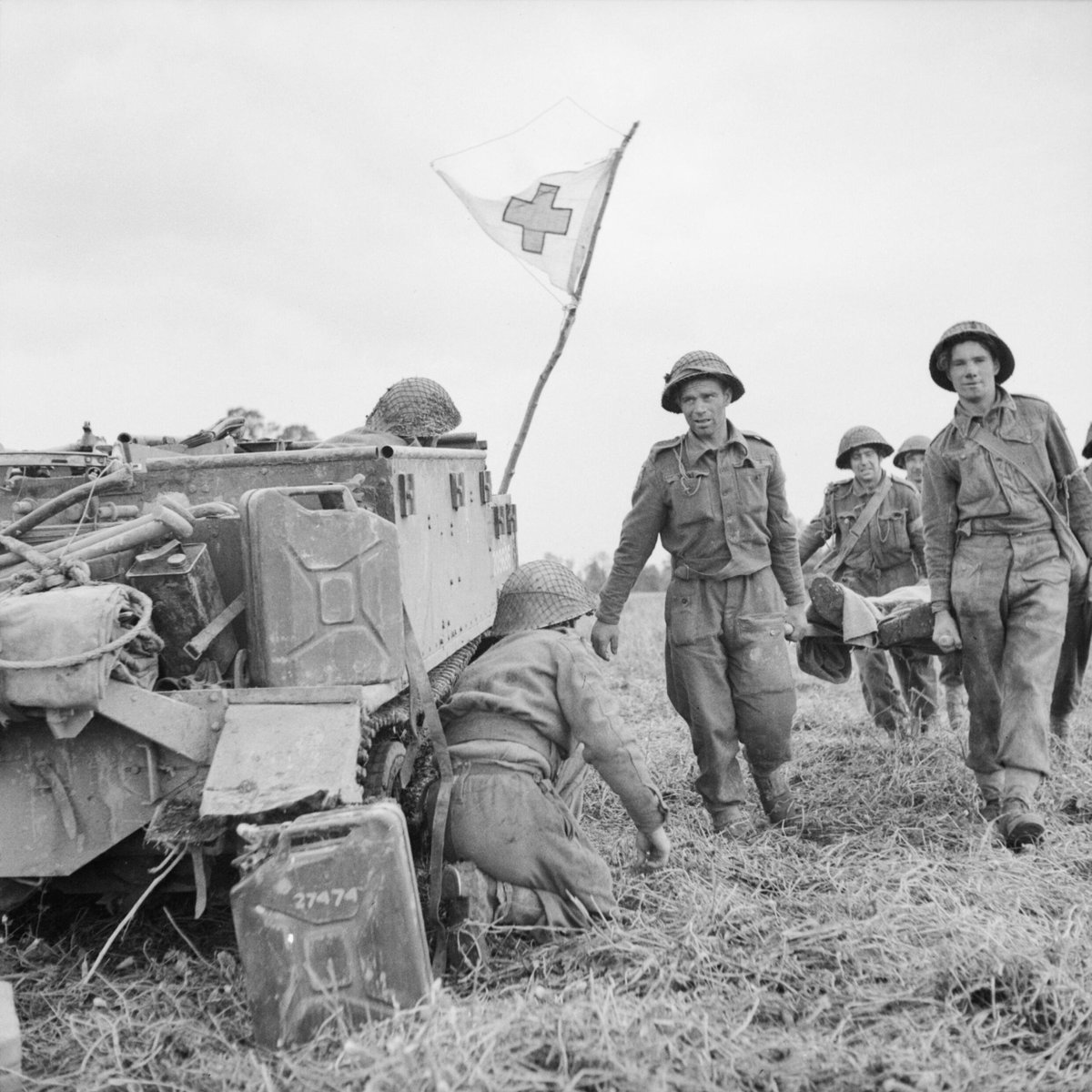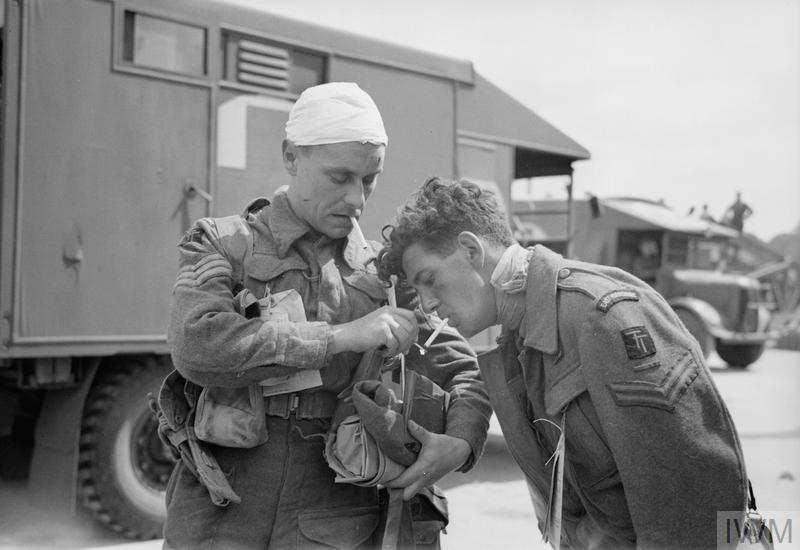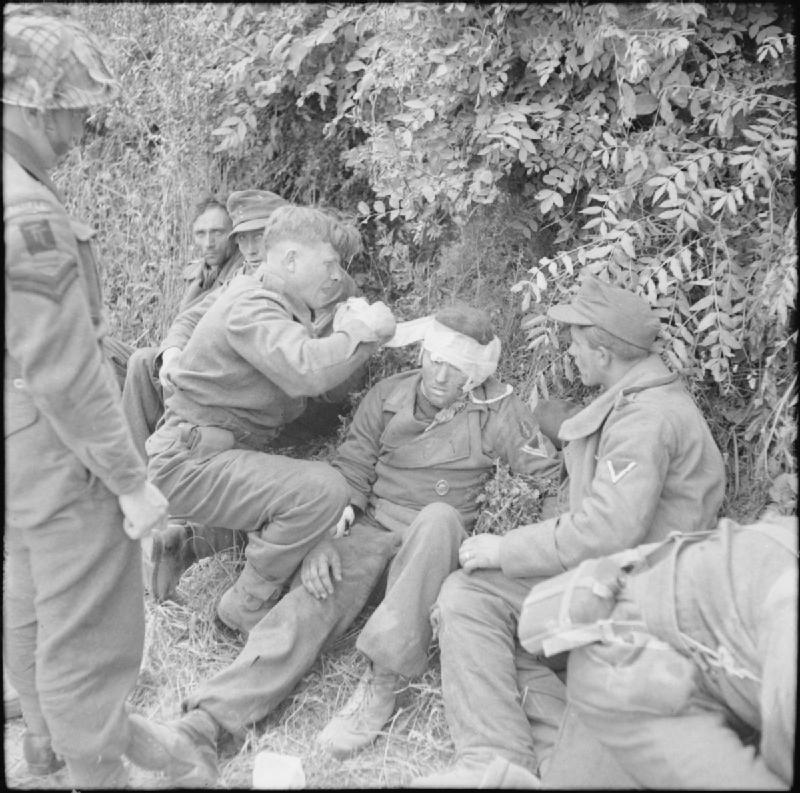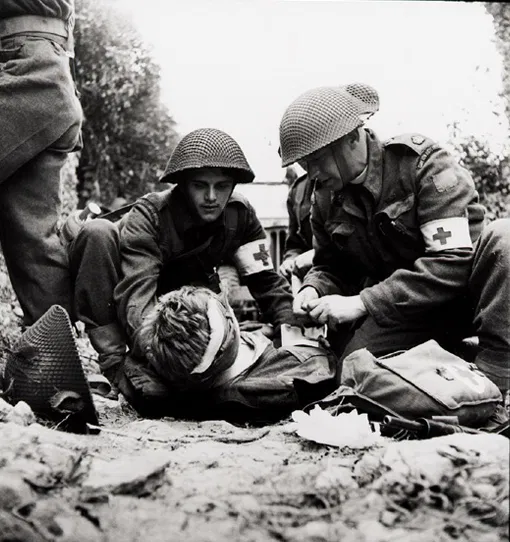Stretcher Bearers - not Medics
A glance at British and Canadian SBs in Normandy. /1
#WW2 #SWW #History
A glance at British and Canadian SBs in Normandy. /1
#WW2 #SWW #History
tldr: the british army favoured rapid casevac, two stretcher bearers run the gauntlet with their stretcher, pop casualty on stretcher (probs already had a dressings applied to wounds by mates) then race them back to a collection point for ambulances to take back to RAP or hosp /2
This was generally felt preferable to in-field treatment by medics not least as 21st Army Group boasted arguably the most advanced medical infrastructure in the world, staffed by exceptionally talented and creative surgical and nursing staff. /3
Through swift casevac you could quickly see them receive blood transfusions, expert assessment and care - with the most urgent cases being treated as the Regimental Aid Post (RAP) by the unit's Medical Officer. /4
The entire system was anchored around swift casualty assessment and triage. Getting casualties back to be treated at the right facilities in a timely manner with minimal faff. /5
So that's the basic logic, but who were the Stretcher Bearers or 'SBs'?
Many were conscientious objectors of some sort but were still determined to serve their country in the military and preserve life.
Some units introduced specialist training for SBs at Battle Schools. /6
Many were conscientious objectors of some sort but were still determined to serve their country in the military and preserve life.
Some units introduced specialist training for SBs at Battle Schools. /6
Medical Officers tended to take a hands on role in the training of SBs, practising very basic treatment and casualty evacuation - swapping notes in the same brigade and training techniques.
It wasn't elite. But it was specialist. /7
It wasn't elite. But it was specialist. /7
SBs tended to be unarmed, but some carried a .38 revolver for protection of their charges.
They all carried Geneva Convention cards to grant them protection in the event of capture, escape aids (hacksaw blade and compass concealed in a button and Michelin maps of France). /8
They all carried Geneva Convention cards to grant them protection in the event of capture, escape aids (hacksaw blade and compass concealed in a button and Michelin maps of France). /8
SBs had to juggle a bulky first aid pack in addition to their stretchers and personal equipment in action, meaning that they could easily get shagged out running a mile to cas, mile back to collection, and mile back to another cas in action.
There were 4 per company. /9
There were 4 per company. /9
George served in 2 Mons, and described arriving in Normandy as part of their Cycle Company.
Such juggling was pretty common.
Here four SBs move one casualty, more usual behind the lines. /10
Such juggling was pretty common.
Here four SBs move one casualty, more usual behind the lines. /10
So yes, of course some basic first aid may have to be granted to casualties.
Chest wounds remained deeply vexing with a high mortality rate before treatment, as these officers from CCS and FTU noted. /11
Chest wounds remained deeply vexing with a high mortality rate before treatment, as these officers from CCS and FTU noted. /11
Thus highly fit, bright SBs were essential; able to keep an eye on their charge & do quick patch ups.
The problem is that such advice was often at extreme odds with the extreme conditions they operated in. As others took cover, SBs ran the gauntlet. /12
The problem is that such advice was often at extreme odds with the extreme conditions they operated in. As others took cover, SBs ran the gauntlet. /12
Just extricating a wounded man constantly exposed them to lethal fire.
Once the cas was back, they were off in an ambulance to RAP or CCS, the stretcher bearers went back in.
Again.
And again.
And again. /13
Once the cas was back, they were off in an ambulance to RAP or CCS, the stretcher bearers went back in.
Again.
And again.
And again. /13
Casevac could prove tricky, especially when officers or senior NCOs suffered head wounds.
Others made personal promises to badly wounded casualties which were too dangerous to recover, and would sneak out or direct patrols to bring them back. /14
Others made personal promises to badly wounded casualties which were too dangerous to recover, and would sneak out or direct patrols to bring them back. /14
Seriously, balls of steel doesn't begin to cover it when it comes to the work of SBs in action.
I remain in awe of Corporal Fred Greenwood's actions, who earned 1st Oxf & Bucks' first Military Medal of the campaign for rescuing casualties, treating and rallying in action. /15
I remain in awe of Corporal Fred Greenwood's actions, who earned 1st Oxf & Bucks' first Military Medal of the campaign for rescuing casualties, treating and rallying in action. /15
Here L/Cpl G. Baldwin of 7 Green Howards receives an MM from Monty. He's clearly an SB given the armband, but could the enemy notice such things?
No.
Simple as really.
These were too small to be of any use. /16
No.
Simple as really.
These were too small to be of any use. /16
Some SBs took to carrying large Red Cross flags in action, draping them around casualties or vehicles signifying intent to rescue badly wounded personnel.
There were some incidents where such men were deliberately targeted.
This went down poorly.
Seen as 'bloody murder'. /17
There were some incidents where such men were deliberately targeted.
This went down poorly.
Seen as 'bloody murder'. /17
US personnel had similar experiences and their medics learned to apply far more prominent markings to their helmets as time went on.
At about 50m an infantryman simply couldn't see the armband.
It was often that simple. /18
At about 50m an infantryman simply couldn't see the armband.
It was often that simple. /18
High rates of casualties could easily swamp a Company's four SBs, that's before one considers the likelihood of them falling as casualties.
You could lose all 4 in a split second.
Jeeps and Universals became increasingly popular for quick casevac. /21
You could lose all 4 in a split second.
Jeeps and Universals became increasingly popular for quick casevac. /21
The Carrier Platoon's sections could find themselves tasked in such a role, picking cas up from SBs at a collection point in an attempt to speed process and decrease vulnerability of all involved.
So there was a steady shift to mechanisation in the sharp end. /22
So there was a steady shift to mechanisation in the sharp end. /22
SBs' role was highly respected in action but we tend to hear very, very little about these exceptionally brave men.
Why?
Well... many fell as casualties or went missing, probably killed by arty, never seen again.
Those who survived rarely wanted to discuss experiences. /23
Why?
Well... many fell as casualties or went missing, probably killed by arty, never seen again.
Those who survived rarely wanted to discuss experiences. /23
So ultimately this essential humanitarian work really does get eclipsed, muted or forgotten down the way.
Many would run unimaginable risks and save dozens of lives only to eventually luck out and fall as casualties themselves. /24
Many would run unimaginable risks and save dozens of lives only to eventually luck out and fall as casualties themselves. /24

 Read on Twitter
Read on Twitter